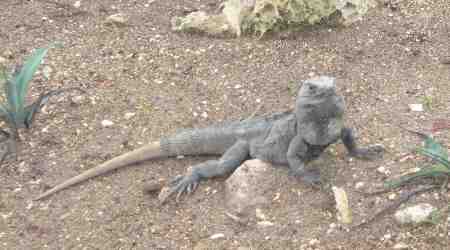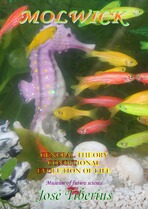1.b) General theory of evolution and scientific advance
Every view has a philosophical substratum, including their experimental approaches –even philosophers usually study the concept of perception. Within a model related to the idea of life, this duality is more apparent. Therefore, it is advisable to have both points of view not to mix them and let a different philosophic-religious position affect the acceptance or rejection of the evolutionary theory’s scientific content.
In the general formulation of this theory, it is clear its philosophical substance. The formalization needs a brief and concise definition of life. Consequently, the most basic idea appears, “The fundamental characteristic of life is freedom.” Nonetheless, its scientific content does not need this affirmation.
This evolutionary theory’s definition helped its development and perfection as if it were a solving puzzle key.
Title II has a brief philosophical exposition of the concepts of evolution and life within the following sections:
-
The first one, relating to evolution, refers to its temporal and spatial perspectives: long-term and short-term development, and micro and macroevolution. The Darwinian Theory alters this concept because it did not know microevolution on Cellular Biology, and it practically omits the existence of short-term changes in superior animals.
-
The second one is about the broad notion of life.
-
Lastly, the vital impulse systems behave like living beings, at least, concerning their evolutionary processes’ characteristics.
In title III, there is an initial critique of other theories. Besides, there are a few objections throughout the book, mainly on the ideas of Darwin. It appears that he is losing momentum in the science world, given the advances in Evolutionary Biology and Genetics.
New ideas about the evolution of life are in title IV, divided into four major sections. The first introduces a general description; the second deals with improvements using a logical argumentation –whose scientific verification is plausible–, the third on sources or origins of the genetic modifications. The last one relates to the means, methods, processes, and mechanisms throughout the changes materialize.
The new thoughts are about the changes in genetic information and its transmission to descendants. The proposals are conceptually closer to Lamarck and Mendel’s theories than to Darwin.
The theory of Conditional Evolution explains the functionality of sexual differentiation, allowing greater precision in the concepts of dominant and recessive genes. Another practical implication is the possible non-existence of the missing link. The evolutionary jumps are typically the result of two or more branches.
There is also an instructive example of the Logical Verification of Information method (LoVeInf) within a car’s evolution.
This title mainly refers to genetics’ regular field, searching for the immediate causes of genetic information modifications that pass on to descendants. Although analogies with the vital impulse systems will appear, they will be mainly for exposition purposes.
Next, title V focuses on defining the Conditional Evolution of Life –CEL, incorporating its formulation as concisely as possible while conserving its essence.
The analysis of the characteristics of the new evolutionary theory shows its scientific vocation.

The next step is empirical verification. Title VI reflects on the difficulty of scientific research for sociological reasons and, at the same time, the relative ease of verifying partial aspects of it, pointing out experiments refuting Darwin’s theory and others that support both Lamarck's and CEL proposals.
Hence, there is an entirely developed mathematical-statistical model of intelligence evolution (1990) to test the Logical Verification of Information (LoVeInf).
The results of the EDI Study (2002) confirm beyond any doubt the LoVeInf method. Likewise, other specific models could also withstand empirical contrasting.
In 2011, it roused the Darwin-out experiment to confirm The EDI Study’s results. In 2016, the CEL book incorporated a newly designed, more upfront Menssalina experiment proposal.
Title VII briefly describes the Esnuka program designed in 1990 to allow the assimilation of the CEL proposals by introducing them through a billiards game’s computer-simulation.
The validation of the purely scientific aspects of the theory would have consequences for the development of Biology and Genetics by providing these sciences with a coherently theoretical base, especially for the advances already made.
It would also give off significant consequences for other branches of knowledge, such as psychology and history. In title VIII, there are some hints about these consequences. There is a double purpose for this title. On the one hand, the implications of the Conditional Evolution of Life –CEL– and, on the other hand, to allow a better understanding of the social reality and its historical development.
A brief exposition of the main theories on evolution is in title IX.
BIOLOGY NEWS
All of the biology news appeared in the newspaper El País on the indicated date, and they are, to a certain extent, about contemporary topics. In case the biology news relates to an article in an international magazine, it appears following the date.
The science and biology news is not part of the text. In other words, sometimes the book and the story have the same opinion and sometimes the opposite.
In short, it tries to express how academia and general culture is changing for biological evolution. At times, the most significant is not the news content but rather the form, the time, the origin, or the effect.
Of course, highlight CEL coincidences and that the primary lines of this theory were fully developed and were public since 11-16-1992.
A special mention is due to the crucial psychological support that gave the published article in a special supplementary edition in El País 11.26.1992 about the parasite’s classic concept from a copycat gene in the text by Eric. H. Davidson (a) –author of the term intelligent genes!
Another interesting article is from 02-10-2002 about the National Conference of Ethology (h) that presents a similar vision of life to the Conditional Evolution.
- 1992-11-26 Living systems
- 1992-11-26 Evolutionary discoveries
- 1992-11-26 Regulatory instructions
- 1992-11-26 Enormous quantities of genetic information
- 1993-01-10 Choose the gender of calves
- 1993-01-10 To modify the theory of evolution
- 1993-01-15 Rapid adaptation - The Spanish mountain cats
- 1993-01-15 Recover eliminated features
- 1993-04-26 Wilm tumor
- 1993-05-12 Men suffer more genetic mutations
- 2001-00-00 Microbes that live without carbon
- 2001-02-19 Horizontal transference
- 2001-02-19 The evolutionary progress
- 2001-02-28 Hitch-hikers
- 2001-03-14 Eukaryote
- 2001-03-19 The simplest way of life
- 2001-10-04 The language gene
- 2002-01-11 Modern human behavior
- 2002-01-23 Olfactory preferences
- 2002-01-23 Women have an excellent sense of smell
- 2002-02-10 Time waste
- 2002-02-20 Human or a chimpanzee
- 2002-02-20 Rough sketch of the human genome
- 2002-04-05 The genes of animals
- 2002-04-25 Genome of rice
- 2002-05-27 Dyslexia
- 2002-10-02 Evolutionary strategy
- 2002-12-20 Each person is different, but not because of his/her race
- 2002-12-20 Genetic variability
- 2003-02-26 Democratic behavior
- 2003-06-12 Oldest fossils
- 2003-06-21 Modifications in human Y chromosome
- 2003-06-21 Chromosome Y
- 2003-08-14 Human genome and genetic functions
- 2003-09-04 American Indians
- 2003-09-10 Enigma of the bees
- 2003-09-10 The concealed face of the genome
- 2003-09-18 Justice, the primates
- 2003-09-18 We understand almost nothing about the human genome
- 2005-03-30 Backup copy
- 2008-05-10 The inheritance of the acquired characters
- 2008-09-03 Appetite and reproduction
- 2010-01-13 chimpanzee and human Y chromosomes
- 2010-11-24 Resistance of bacteria
- 2010-12-16 Hybrid love and X chromosome
- 2012-09-06 Junk DNA comes to light
- 2014-01-30 What we have of Neanderthal
- 2014-02-06 The mysterious behavior of the X chromosome
- 2014-03-28 Synthetic life is here
- 2016-11-03 La naturaleza utiliza solamente dos sexos(es) **
- 2018-04-23 DNA structures formed in the human cells **
